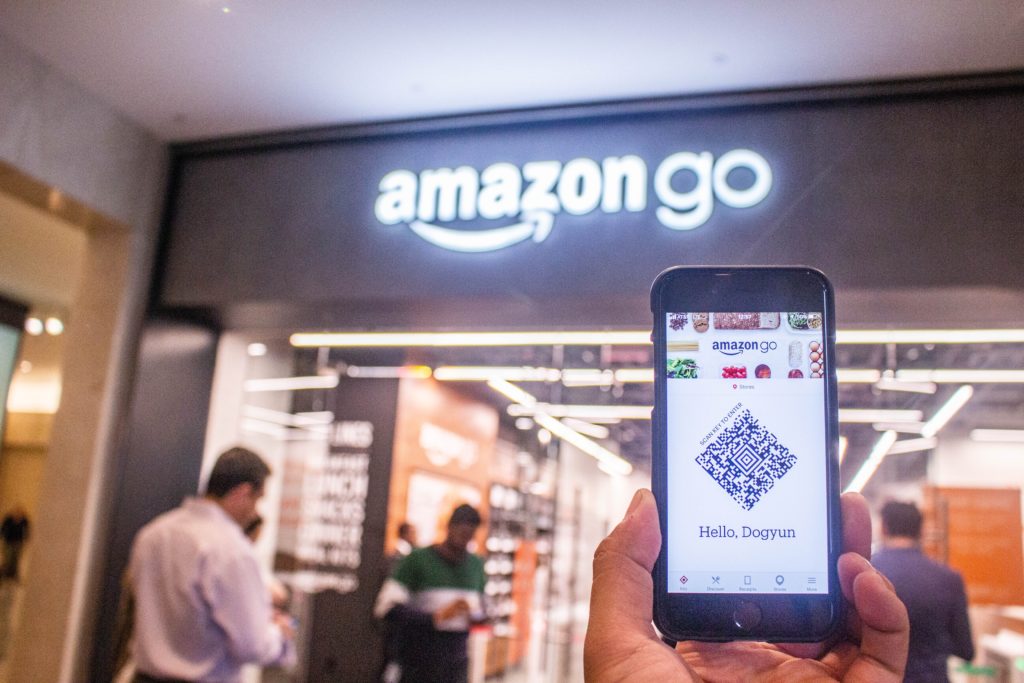What to Expect in the Amazon In-store Experience in 2021
Many in the grocery retail industry ask themselves what developments we will see in the coming year. Since the introduction of Amazon Go stores, the acquisition of WholeFoods, and its current scaling of Amazon Fresh stores, Amazon in-store experience in 2021 has now become a major force with which to be reckoned for brick-and-mortar grocery retailers.
Amazon marched into the grocery retail industry because it recognized that physical stores will remain critical. It also understood that the in-store grocery experience still has many points of friction that need to be eliminated. That’s why Amazon’s latest projects all focus on improving the shopper journey.
The Amazon Dashcart eliminates the need to manually scan every item with a grocery cart that recognizes the products. The Amazon Go store experience lets customers grab items, leave without standing in the checkout line and automatically get the bill. Amazon’s Alexa kiosks1 act as voice-activated in-store assistants to help shoppers locate items within the store itself.
Grocery retailers are poised in anticipation (maybe even trepidation?) over Amazon’s latest developments. They know that they will also need to alter the shopper experience to continue to appeal to shoppers, especially younger ones. But Amazon’s latest developments come with a heavy price tag that not all grocery retailers can afford. The hardware alone for Amazon Go, which includes computer vision, deep learning algorithms and sensor fusion costs $1 million2 for each store.
So how can other grocery retailers ensure they are also staying competitive and adopting the latest technology that will serve the future shopper experience?
Watch Out for These In-store Solutions Next Year
Here are a few retail in-store technologies that Amazon could introduce, acquire, or might be even developing in-house right now. Spoiler alert: an affordable indoor positioning service is key to competing with Amazon.
Loss Prevention at Physical Checkout
According to estimates by the National Retail Federation (NRF), loss from shrink totaled $61.7 billion in 2019.3 Companies will fight back with technological solutions in both manned cashiers and self-checkout.
This includes point-of-sale data analysis and video-based analysis with the help of artificial intelligence algorithms. Everseen already does this by using a combination of artificial intelligence, computer vision and big data to detect abnormal shopper activity. It secured a deal with Walmart4 last year and more recently with Kroger.5 ThirdEye Labs focuses on video-based analysis to detect concealment and checkout theft. Both technologies integrate into existing technology and operate in real time to help companies learn to identify shoplifting, sweethearting, unintended errors at checkout, concealment and theft detection.
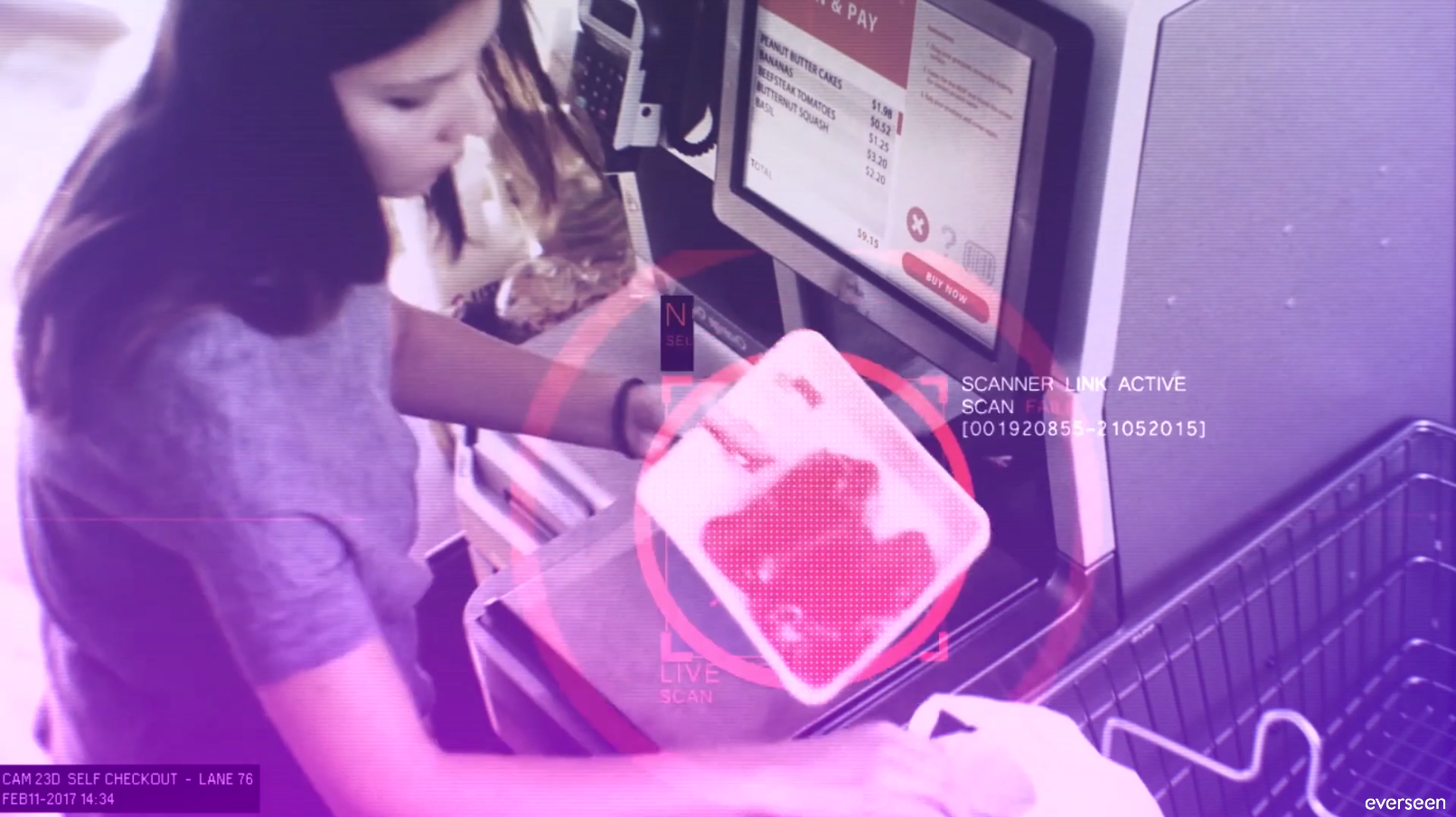
Source: https://everseen.com/
More Efficient Inventory and Updated Realograms
Another area ripe for change in grocery retailing is the field of in-stock and on-shelf availability, and compliance to planograms. Next-generation smart shelving solutions use shelf cameras to keep track of product availability while adhering to planogram guidance, but they require a heavy upfront investment. That’s why we’ve seen retailers start to adopt ground robots from companies like Bossa Nova, Qopius, and Simbe.
The next generation robots are flying drones. We’ve already seen this at Gather, a company that combines robotics with deep learning and computer vision to develop drones that fly around grocery stores, count boxes and scan codes in individual aisles. Another company, IndoorRobotics, focuses on autonomous flying drones for similar tasks.
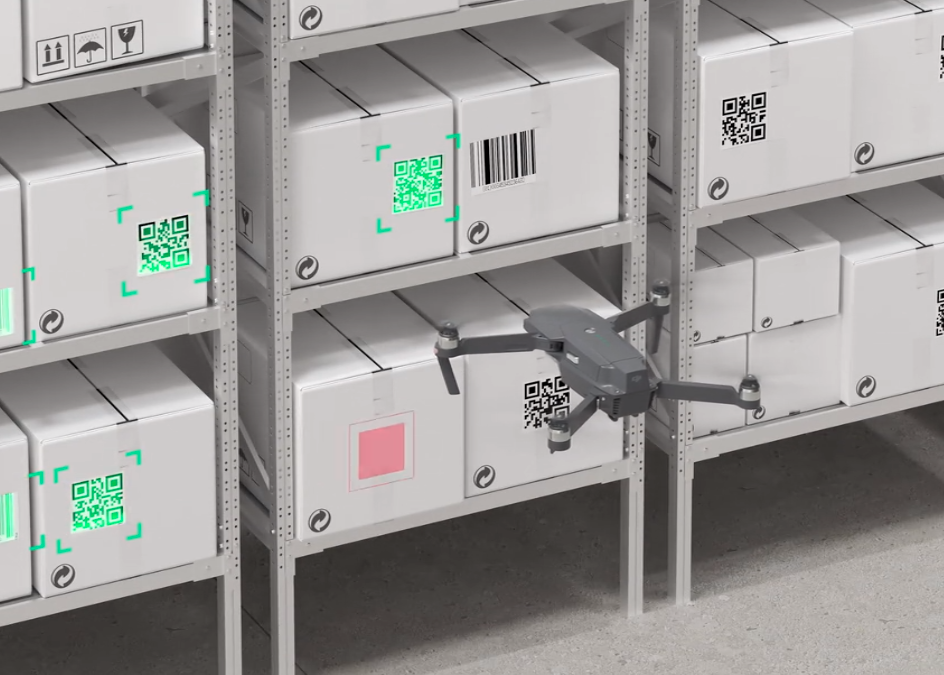
Source: https://gather.ai/
Innovative displays and advertisements
Robotics aren’t limited to ground or flying drones. Tokinomo has implemented them as an interactive robotic display for groceries, complete with sound, light and motion that bring products on the shelf to life. Other innovative display technologies include HYPERVSN, which offers holographic 3D displays. Cooler Screens has a digital display on retail coolers that uses cameras and sensors to identify the customer’s profile and display sales on the most relevant items.
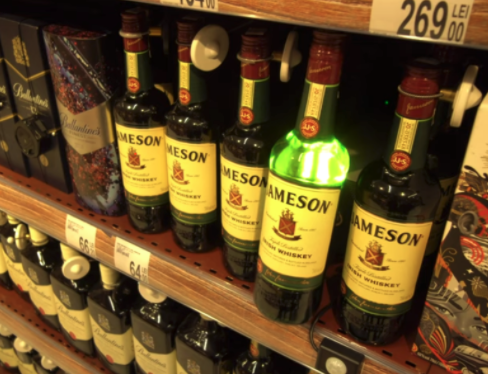
Source: https://www.tokinomo.com/
In-store location
One of the most forward-looking solutions on the market today is in-store navigation. It improves the shopper experience by speeding it up, while at the same time recovering revenues for retailers due to unfound products. It also helps to increase store throughput, a critical pain point for retailers since the start of the global pandemic.
But in-store navigation in new stores by Amazon will probably be prohibitively expensive for most grocery retailers. Oriient’s IndoorGPS is an affordable and hassle-free solution for retailers, with clear ROI from Day-1. It doesn’t require any hardware installation, but instead works seamlessly in the retailer’s own app.
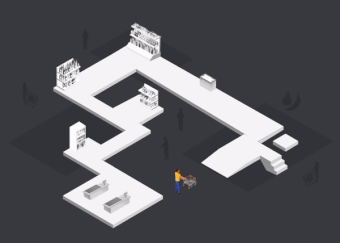
Source: www.oriient.me
All Bets on In-Store GPS
“Helping customers conveniently save time on locating products increases shopper loyalty and reduces abandonment. Retailers such as Target have already rolled out an in-store navigation solution,” says Mickey Balter, CEO and co-founder of Oriient.
“The shopper location also duplicates another Amazon success: leveraging customer data (think the personalized recommendation engine) to create the perfect online experience. Indoor GPS technology delivers this experience offline as well, by collecting analytics on shopper behavior, including foot traffic, and the efficacy of promotions and layout performance,” he adds.
Balter also mentions that Indoor GPS technology can also be used internally to serve the store staff, optimizing grocery picking time and tactics around the planograms, signage and different promotions.
It also perfectly complements the technologies above:
- For fraud detection – The data it stores on the customer’s journey can be valuable for giving machine learning algorithms better indications with which to detect fraud.
- To create realograms – By integrating AI, barcode scans and indoor positioning, realograms can be automatically updated to provide accurate product placement reflections.
- In digital marketing – Knowing when customers are about to approach the category, shelf, cooler screen or robotic display, enables in-store proximity marketing strategies, giving more personalized promotions at the shelf level that are delivered right at the critical moment of purchase.
With all these potential data points of integration, in-store GPS is poised to do in retail what Amazon has successfully done in multiple industries: disrupt and forever alter the future store with the ultimate digital customer experience.
Want to learn more about how grocery retailers can adopt the latest technology that will serve the future shopper experience? Oriient your stores today!
1. https://www.forbes.com/sites/christopherwalton/2020/09/01/4-ways-amazon-fresh-will-change-grocery-shopping-forever/?sh=1aa104431bde
2. https://www.forbes.com/sites/andriacheng/2019/11/21/thanks-to-amazon-go-checkout-free-shopping-may-become-a-real-trend/?sh=e24cecd792bf
3. https://nrf.com/media-center/press-releases/retail-shrink-totaled-617-billion-2019-amid-rising-employee-theft-and
4. https://www.businessinsider.com/walmart-tracks-theft-with-computer-vision-1000-stores-2019-6
5. https://progressivegrocer.com/kroger-adopting-visual-ai-technology
6. https://techcrunch.com/2017/09/20/target-rolls-out-bluetooth-beacon-technology-in-stores-to-power-new-indoor-maps-in-its-app/
